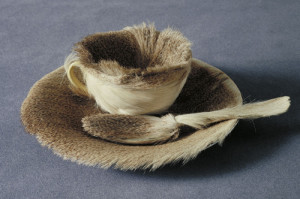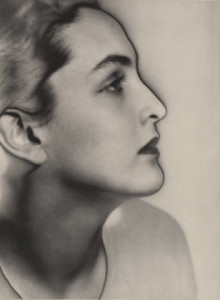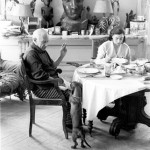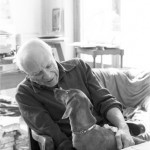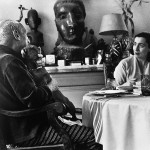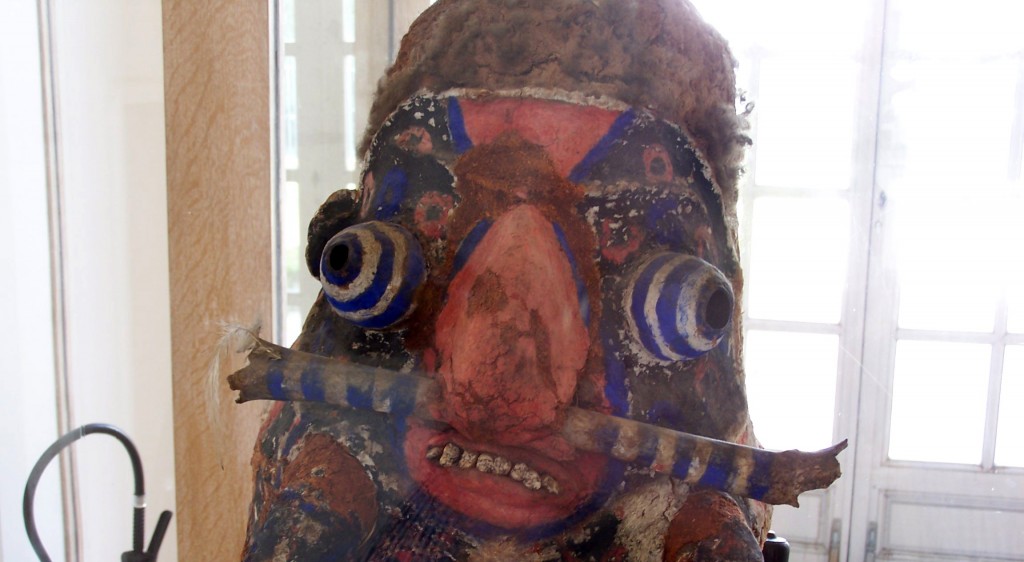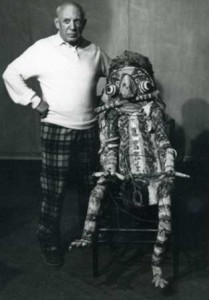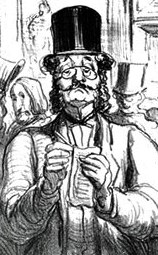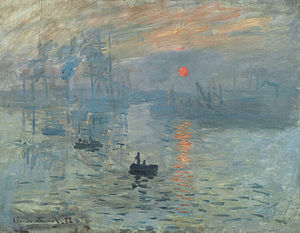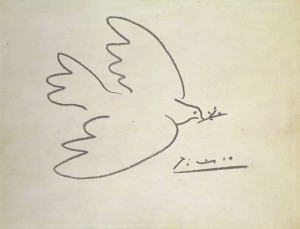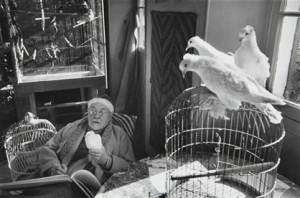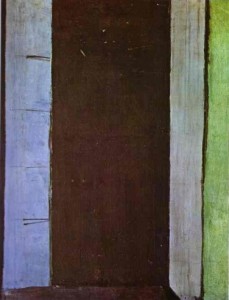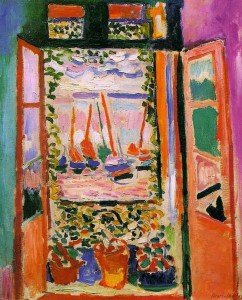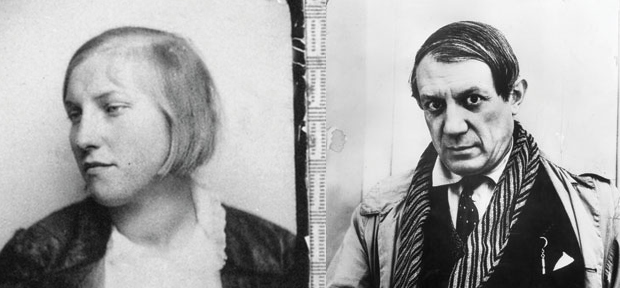 As the sun set in Paris, on January 8, 1927, Pablo Picasso was walking past a fashionable department store when his eyes fell upon a young shopper. Immediately infatuated, the artist (then unhappily married and in his mid-forties) took Marie-Thérèse Walter by the arm and said, “I’m Picasso! You and I are going to do great things together!” She was confused by the man and unaware of who he might be. Picasso introduced himself by dragging her into a bookshop and showing her a book filled with reproductions of his paintings. Thus began a passionate affair and an enormously productive period for Picasso. Continue reading
As the sun set in Paris, on January 8, 1927, Pablo Picasso was walking past a fashionable department store when his eyes fell upon a young shopper. Immediately infatuated, the artist (then unhappily married and in his mid-forties) took Marie-Thérèse Walter by the arm and said, “I’m Picasso! You and I are going to do great things together!” She was confused by the man and unaware of who he might be. Picasso introduced himself by dragging her into a bookshop and showing her a book filled with reproductions of his paintings. Thus began a passionate affair and an enormously productive period for Picasso. Continue reading
Tag Archives: Picasso
Guess What? How the teacup got its fur
The concept for Méret Oppenheim‘s most famous sculpture, Object (Luncheon in Fur), was born in a conversation with Pablo Picasso at a Paris café.
As Rebecca Mead tells it in the March 23rd issue of The New Yorker:
In 1936, Meret Oppenheim, the Swiss Surrealist artist, had tea with Pablo Picasso at the Café de Flore, in Paris. Oppenheim was wearing a bracelet, of her own design, that was clad in ocelot fur. Picasso admired it, noting that one could cover anything with fur. Soon afterward, Oppenheim produced her most famous work: a teacup, saucer, and spoon covered with the creamy-tan fur of a Chinese gazelle. The piece is now in the collection of the Museum of Modern Art, in New York, and is celebrated for its suggestive conjunction of the domestic and the erotic.
After Picasso’s casual observation, Oppenheim, who was just finishing her tea, reportedly joked “even this cup and saucer.” As the idea took hold, she turned and called out, to the amusement of all, “Waiter, a little more fur!”
Object is rich in sexual connotations, its back story in art world connections. Also seated at the table during the conversation was the photographer, Dora Maar — she and Picasso were then lovers. Maar posed for some of the most intense paintings Picasso ever made. Oppenheim herself had posed for their friend, the photographer Man Ray.
The unforgettable sculpture came to life when André Breton, the leader of the French Surrealists, asked Oppenheim to exhibit something in their next exhibition in Paris. Oppenheim went to a local department store to purchase the cup and saucer and the marriage of fur and teacup was consummated. It was Breton who came up with the name “Luncheon in Fur” (Déjeuner en fourrure), as a reference to Édouard Manet’s famously scandalous painting of 1863. The imaginative bracelet that caught Picasso’s eye was later bought from the struggling, young artist for a few Swiss francs by the Italian designer Elsa Schiaparelli.
Object was later exhibited at the Museum of Modern Art in New York, which purchased it in 1946. Its fame has only grown since then.
If all the talk of the eroticism of Object eludes you, simply imagine drinking hot liquid from the furry cup.
Duncan’s Dog meets Picasso
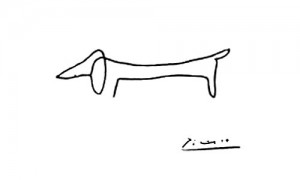 In April 1957, the photographer David Douglas Duncan visited his friend Picasso at La Californie, the artist’s villa in the South of France. He brought along his dachshund, Lump, and a mutual love affair began.
In April 1957, the photographer David Douglas Duncan visited his friend Picasso at La Californie, the artist’s villa in the South of France. He brought along his dachshund, Lump, and a mutual love affair began.
- Lump puts his front paws up on Picasso.
- Lump and Picasso meet face to face for the first time.
- Lump kissing Picasso
Picasso and his wife, Jacqueline, were having lunch when Lump first saw Picasso. The confident young dog immediately walked up to him and put his paws on the man Duncan always referred to as “Maestro.” Picasso looked down and said, “Buenos dias, amigo!” Lump jumped into Picasso’s arms and gave him a kiss. Jacqueline was shocked. While Picasso’s own dogs were often in his studios, Jacqueline had never seen Picasso allow them to sit in his lap. But Lump was no ordinary dog. He immediately made himself at home and thereafter became a regular visitor. Continue reading
The Unwanted Gift: Picasso and Matisse
In Paris’s Musée Picasso, a four-foot tall idol from the Pacific Islands sits in a glass case. Wild eyed and dramatic, with arms flung out stiffly, visitors might justifiably assume that it was one of the many native objects that Picasso kept in his studio for inspiration. But the story behind it is much more complicated. The idol was a gift from Matisse that Picasso didn’t want.
While their styles were quite different, both artists were inspired by the art of aboriginal peoples (‘primitive art’ as it was known then). For Picasso, it is well known that African art was the catalyst for his Cubist revolution. What is less well known is that Matisse collected African sculptures even before Picasso. In fact, he was the person who introduced Picasso to one of them at a soirée in Gertrude Stein‘s apartment in Paris in 1906.
According to Max Jacob, a friend of Picasso, who was there that evening,
Matisse took a wooden statuette off a table and showed it to Picasso. Picasso held it in his hands all evening. The next morning when I came to his studio the floor was strewn with sheets of drawing paper. Each sheet had virtually the same drawing on it, a big woman’s face with a single eye, a nose too long that merged into a mouth, a lock of
hair on one shoulder … Cubism was born.
Ultimately, Matisse found the work of the Pacific peoples more to his taste. In 1930, when he was 60, he even traveled on a ship to Polynesia and lived in Tahiti for a couple of months.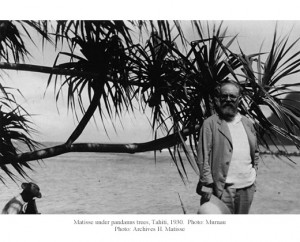
By the late 1940s and early 1950s, after decades of sometimes bitter competition, Picasso and Matisse’s wary but respectful relationship had grown into an important friendship. Whenever the old rivals met together in the South of France, they discussed what they were working on and from to time exchanged gifts and paintings. Since Matisse was twelve years older than Picasso, there was an element of the mentor in their interactions — one Picasso resisted.

Matisse’s studio at Le Régina, Nice, 1953. New Hebrides mask on chair at right.
(Photograph: Hélène Adant)
When Matisse presented Picasso with the New Hebrides idol from his tour of the South Seas, Picasso could only smile and say thank you. But Francoise Gilot, Picasso’s companion at the time, noticed how Picasso’s jaws tightened as Matisse explained how he had come to own it and how it was used in rituals. In her 1990 memoir Matisse and Picasso: A Friendship in Art, she describes how she “could tell right away he didn’t like it.”
Picasso left Matisse’s studio without his gift by explaining that there wasn’t room in the car for it. As they drove away, Pablo released his anger. “Matisse thinks I have no taste. He believes I am a barbarian and that for me any piece of third-rate tribal art will do!”
When Gilot suggested they accept the gift, but put it in a room in their home where no visitor would ever see it, Picasso wouldn’t stand for it. “Certainly not!…I will not accept this awful object…If I accept the hideous gift from my so-called friend, I will have to put it in a place of honor. If I don’t our relationship is in jeopardy.”
Picasso spent much of the drive home angry and cursing. Obviously frustrated, he fretted, “I am in a bind; what am I to do?”
Gilot and Picasso decided the only thing to do was to come up with excuses whenever they went to Matisse’s home for why it was not the right time to take the idol with them. This was not so easy. Every visit they discovered that Matisse had placed the bright red, white, and blue idol in whatever room they were. Yet somehow Picasso managed to never accept the gift from Matisse.
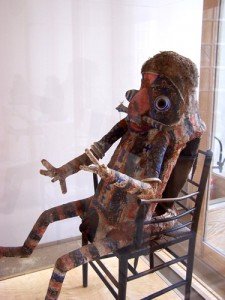
Ceremonial Headdress, New Hebrides in Musée Picasso, Paris
Tree ferns and pandanus coated in painted clay
This is why Gilot was shocked to see it thirty years later proudly displayed in the Musée Picasso when she attended its opening in 1985. She later learned from Matisse’s son Pierre that after his father’s death in 1954, Picasso had asked him for the long postponed gift. By then Gilot had already left Picasso.
After considering this surprising news, she realized that several of Picasso’s later pictures had figures reminiscent of the wild-eyed idol. Somehow, according to Gilot, “Matisse had foreseen his friend’s further evolution” and managed to mentor Picasso — even after his own death — with an unwanted gift.
Insults that named art movements
Be careful when you insult an artist. You may be making art history.
Art criticism is probably as old as art itself and often comes in harsh tones. Plato was no friend of artists, describing them as tricksters and called for their banishment from his Republic. Yet more than once a critic’s insult has ended up naming an art movement.
In 1874, Louis Leroy wrote about an exhibition of a group of artists that included Monet, Pissarro, Degas, and Renoir, who called themselves Le Société anonyme. In a mocking tone, Leroy said of Monet’s Impression: Sunrise,
Impression; I was certain of it. I was just thinking that as I was impressed, there had to be some impression in it. And what freedom! What ease of handling! A preliminary drawing for a wallpaper pattern is more highly finished than this landscape!
At the end of the review, Leroy pretends he saw a mad admirer dancing around the painting, singing ““Hi-ho! I am impression on the march, the avenging palette knife…”
The article was called “The Exhibition of the Impressionists.” The name stuck.
The Dove: Picasso and Matisse
One of Picasso’s most famous and popular images is his lithograph of a dove as a symbol of peace. But the dove was Matisse’s. Literally.
Matisse and Picasso first met at the salon of the American patroness and writer Gertrude Stein’s in the early 1900s. At the time they were rivals for both her affections and those of the modern artists of Paris. Picasso’s followers once plastered the walls of Montmartre with anti-Matisse graffiti like “Matisse drives you mad!” and “Matisse does more harm than war!” Matisse responded by using the term “Cubism” to mock the art of Picasso and his followers, a label that would, of course, stick.
As they grew older, they grew closer. By the end of World War II, the old rivals had truly become great friends. Matisse was now almost eighty, nearly bed-ridden and living in apartments in Vence, a town close to Nice. His wife, Amelie, had recently divorced him; his children were grown with children of their own. His bedroom and studio were filled with birds and plants to keep him company and inspire him.
Picasso, along with his mistress, Francoise Gilot, was a regular visitor whenever they came south. They often exchanged paintings and even exhibited together. Matisse kept a Picasso over his bedroom’s mantelpiece and Picasso displayed his Matisses in his studio. Picasso, who was eleven years younger, would bring recent paintings to Matisse for comments. An engraver who did work for both of them said Picasso thought of Matisse “as an elder brother.” Matisse thought of his rival as “the kid.” Their arguments continued, but more like sibling rivalry as they sat alone at the pinnacle of the art world.
When Matisse took on his last great commission — the chapel of Vence — he emptied his living quarters so he could cover the walls with brightly colored cut-papers and not be distracted. He bid a sad farewell to the plants that one can see in so many of his paintings. His exotic pigeons were sent to Picasso.
Behind the Most Abstract Matisse
French Window at Collioure is the closest Henri Matisse ever got to painting a totally abstract work. Without the title, the painting is hard to see as more than three simple bands of color framing a large black center. The mood is somber and calm. But what is behind this picture?
The subject is one that Matisse had already painted many times. For nearly a decade, when Paris became cold and wet, he had returned to his rented studio in Collioure, a town near the Spanish border in the south of France. Its window looked out on the town’s harbor.
The most famous version is perhaps the first — 1905’s Open Window, which became the iconic image of Fauvism. It conveys the visual excitement Matisse felt that summer when he first discovered the town and the light of the South of France. The light triggered a new movement that became known as The Fauves (‘the wild beasts’). He and his colleagues, André Derain and Maurice de Vlaminck, reacted with violent colors that went beyond what even their beloved van Gogh had used in Provence. [Vlaminck said he loved van Gogh more than his father.] Matisse described the colors they applied unmixed in raw fashion on the canvases as ‘explosives.’ His ‘co-conspirator’ Derain said their paintbrushes were like sticks of dynamite.
After this period of Fauvist fireworks, Matisse’s approach evolved. He told the Futurist artist Gino Severini that he believed in an art stripped down to its essentials, simplifying an image “like you might prune a tree.” Still, 1914’s French Window is so different a view from the one of 1905 that it is hard to believe it is the same window. Why is that and why is it so unique in Matisse’s career?
The picture’s date is an essential clue. The window had not changed, but the world had.
France was now at war. The Great World War had begun with great confidence but by the time the picture was painted it was a hard time to be hopeful. From the start, the French suffered great losses. News from the front was difficult to find but rumors told of millions of French soldiers killed. Matisse’s home town in the north of France was one of the first overrun by the German army. His elderly mother was in ill health and trapped behind enemy lines; his brother a prisoner of war. Matisse had to leave his own house in the suburbs of Paris after it was commandeered by French officers as a military headquarters. His fellow Fauvists, Derain and Vlaminck were drafted. Matisse, though he tried to enlist several times, was rejected because he was already in his mid-forties.
In Collioure, Matisse opened his house to refugee artists like the Spanish Cubist, Juan Gris. The young Gris’s poverty (his dealer could no longer provide his small stipend) reminded Matisse of his own early days as an artist. Matisse was also without the support of his gallery, so he went to his friend, the American patroness, Gertrude Stein. Happily, she agreed to help Gris out with some income. When the funds never arrived and there was no explanation, it was the end of Matisse’s friendship with her.
Rather than a colorful harbor of swaying sailboats, The French Window of 1914 opens onto blackness. Matisse’s search for “an art of balance, of purity and serenity” is fruitless here. There is some balance, but it is not firm, only tentative. The sketchy marks of the window shutter at left reflect anxiety, the painful uncertainty of wartime. His colors are muddied with grays, uncharacteristically subdued.
What is arguably the most radical painting Matisse ever painted never saw the light of day during his lifetime. When it was finally exhibited in the U.S. in 1966, it was already well after the American Abstract Expressionists had created their even more radical abstract revolution. The art world was well prepared to greet French Window at Collioure with some surprise perhaps, but mostly admiration.
The painting, however, expands our understanding of one of the great masters of the twentieth century. Matisse’s reputation is as a painter whose modernist vision resulted in largely comfortable, colorful pictures of bourgeois or exotic interiors, cut off from the concerns of politics and current events. Yet, the French Window of 1914 is an existential statement by an artist caught in a world blackened by war. It is Matisse’s Guernica, painted a generation and world war earlier than Picasso’s.

